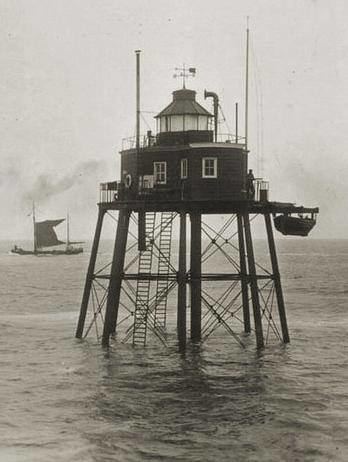Wannabe lighthouses - No.2 The Kish Bank light

Alexander Mitchell's pile light off the coast of Fleetwood in Lancashire. Constructed in 1840, it is probably similar in design to Mitchell's nearly-completed lighthouse on the Kish Bank in Dublin This is the second installment of a three-part mini-series about Irish wannabe lighthouses which will be shown on Netflix starring Frances McDormand and that guy from Peaky Blinders. Basically, a wannabe lighthouse is one where construction began but it never got to live the dream of sweeping its beam across the perilous sea. Alexander Mitchell was a Dublin-born, Belfast-reared engineer who went blind at the age of 21. Undaunted, he carried on a brickmaking and building enterprise for 30 years until he retired to concentrate on his screw-pile method of construction, which he had patented. Basically, this consisted of screwing poles or piles into soft ground like a corkscrew and which, like a corkscrew, would not pull out straight. Thus he was able to construct lighthouses and piers at...



